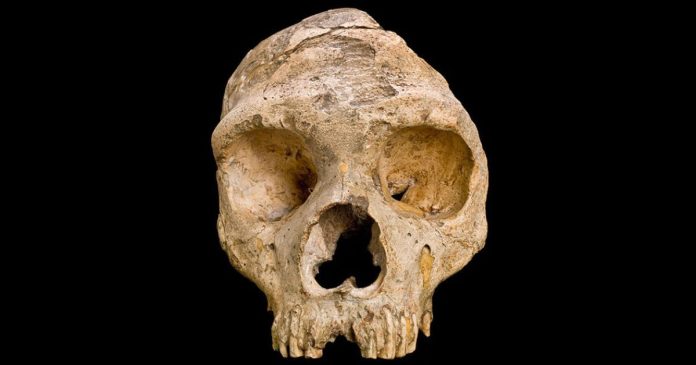How ancient toxins may have shaped human evolution
For decades, the question of why Neanderthals vanished while Homo sapiens survived has fascinated scientists and historians alike. Climate change, interbreeding, and competition have all been discussed—but now, new research points to a surprising suspect: lead poisoning.
A groundbreaking study published in Science Advances reveals that exposure to toxic metals like lead may have influenced not only the fate of Neanderthals but also the evolution of the human brain itself.
Ancient Evidence Hidden in Teeth
By analyzing 51 fossilized teeth from species including Australopithecus, Paranthropus, early Homo, Neanderthals, and modern humans, researchers discovered microscopic traces of lead exposure dating back nearly two million years.
Using laser-ablation geochemistry, scientists identified “lead bands” inside the enamel and dentine—tiny chemical scars formed during childhood growth. These reveal that ancient hominins were periodically exposed to lead, likely from natural sources such as volcanic dust, groundwater, or contaminated soil.
This discovery rewrites what we thought we knew: lead exposure wasn’t a modern industrial issue—it was part of our evolutionary landscape.
A Genetic Key: The NOVA1 Gene
The research team then explored how this exposure might have impacted brain development.
Using lab-grown brain organoids—miniature, simplified human brains—they compared organoids carrying the archaic NOVA1 variant (similar to Neanderthals) with those carrying the modern human variant.
When exposed to low levels of lead, organoids with the archaic NOVA1 variant showed greater disruption to the FOXP2 gene, which plays a crucial role in language and neural circuit formation.
In contrast, organoids with the modern NOVA1 variant displayed greater resilience.
This suggests that modern humans evolved a protective advantage—a kind of biological resistance to environmental toxins that could have supported healthier brain development and complex cognition.
Evolution Through Environmental Stress
The findings imply that surviving and thriving in a toxic world required more than just intelligence—it required biochemical resilience.
Our ancestors may have endured the same contaminated environments as Neanderthals, but genetic adaptations, like changes in the NOVA1 gene, could have made the difference between survival and extinction.
The study paints a picture of evolution not only driven by adaptation to climate or diet but by an invisible force—the chemical elements of Earth itself.
A New Perspective on Neanderthal Extinction
The hypothesis is both daring and thought-provoking: perhaps Neanderthals’ vulnerability to heavy metal toxicity was one of the many small disadvantages that added up over time.
While no single cause explains their disappearance, the combination of environmental stress, genetic differences, and smaller population sizes might have tipped the balance in favor of Homo sapiens.
This theory challenges us to view human evolution as a story shaped not just by survival of the fittest, but by survival of the most resistant.
Why It Matters Today
Even though this study looks deep into prehistory, it echoes a modern truth: lead exposure remains a global health hazard.
The same toxin that may have influenced the fate of ancient humans still harms developing brains today—reminding us how biology, environment, and survival have always been intertwined.
Final Thoughts
Lead poisoning may not be the only reason Neanderthals disappeared, but this research adds a fascinating new layer to our understanding of human evolution. It suggests that even subtle differences in how our brains responded to environmental toxins could have shaped who we became.
The study opens a profound question:
Did humanity evolve not just through intelligence—but through endurance against the planet itself?
If you like this story check out : Neanderthals Had Local Food Traditions, Study Finds
Sources
- Science Advances — “Ancient lead exposure shaped evolution of human brain resilience”
https://www.science.org/doi/10.1126/sciadv.adr1524 - Arkeofili (Turkish) — “Neandertallerin sonunu kurşun zehirlenmesi mi getirdi?”
https://arkeofili.com/neandertallerin-sonunu-kursun-zehirlenmesi-mi-getirdi/ - Phys.org — “Ancient lead exposure may have influenced evolution of the human brain”
https://phys.org/news/2025-10-ancient-exposure-evolution-human-brain.html - ScienceDaily — “Study finds ancient lead exposure shaped evolution of the human brain”
https://www.sciencedaily.com/releases/2025/10/251015230952.htm - Southern Cross University News — “Ancient lead exposure may have shaped human evolution”
https://www.scu.edu.au/news/2025/ancient-lead-exposure/

